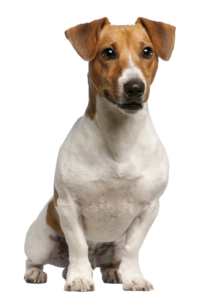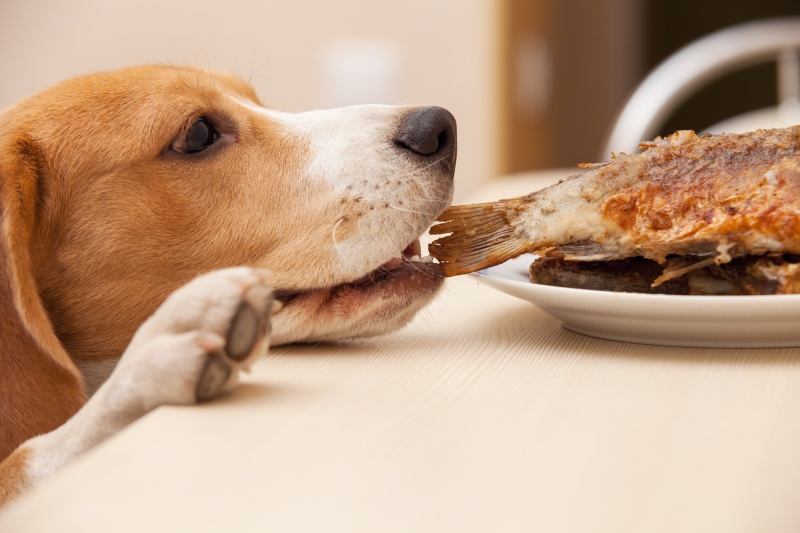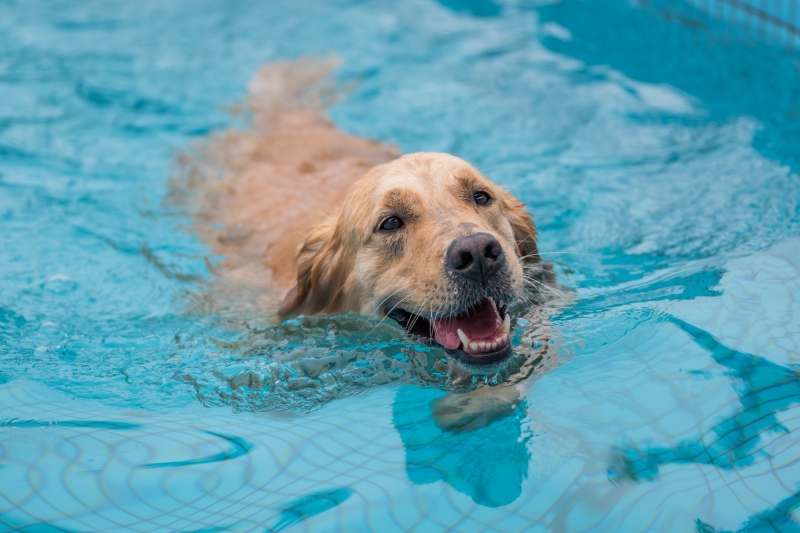If you’re wondering “should my dog lose weight?” – you’re not alone. Around the world, there is a growing epidemic of human obesity, with more than 1.9 billion overweight human adults. Unfortunately, as people get fatter, so too do their pets, as we share table food and all the small treats that we love ourselves — treats that are not intended for dogs.
Globally, pet obesity rates are between 22% and 44%, and those numbers are climbing. With considerably more body fat, overweight pet dogs are suffering the consequences of overindulging.
Carrying extra weight can negatively impact dogs’ health in numerous ways, decreasing their longevity and making them more prone to health conditions such as arthritis, joint pain, breathing problems, heart issues, and diabetes.
The good news is that it’s never too late to help your dog get back into shape. Read on for a guide to helping your furry friend drop extra pounds and live a long and healthy life.
Should your dog lose weight?
What you think is just a small act of kindness – an extra slice of cheese here and there, for instance – could actually be harming your dog.
Moreover, once a dog becomes overweight, his working body speed slows, making him less active. As you feed more and more extra treats, he’ll continue to pack on the pounds – potentially leading to diseases, joint pain, and other health issues.
The bottom line is, if your dog is overweight or obese, it’s time to help him adjust his diet and exercise routine to get back to his former, thin self.
After all, thinner dogs can live up to 15% longer than heavier dogs, giving you plenty of incentive to help your furry best friend slim down.
How much weight should my dog lose?
The best way to determine if your dog is overweight is to use a body condition score chart.
Using the chart as a guideline, run your hands along your dog’s ribcage to approximate the health of your dog’s body from 1 (emaciated) to 9 (obese).
Ideally, you want your dog to score around a 4 or 5, meaning:
- Your dog has a clearly defined, visible waistline
- The ribs have minimal fat covering and are easy to feel
- The abdomen is visibly tucked up when viewed from the side
Beyond a 5, a dog’s ribs will become less palpable to the touch, and the waistline and abdominal tuck will begin to disappear. There will also be fat deposits along the thorax, spine, and base of the tail.
If you need additional guidance, check with your vet, who can weigh your dog and let you know where your dog falls on the body condition chart. From there, aim to help your dog gradually lose 4% to 5% of its total body weight over the next month while preserving muscle.
Tips to help your dog lose weight
1. Identify food sources
Identify the sources of any extra food your dog is eating, including table scraps, excess treats, and food from other animals in the house, and eliminate these extras.
When feeding additional pets, remove any leftovers before your dog has a chance to indulge.
2. Adjust your rewards
Remember, you can show your affection without the use of food. One-on-one attention and quick play sessions can be just as effective.
You can also use low-calorie treats such as raw vegetables, which increase fibre and feelings of fullness.
In general, your dog’s treat consumption should make up only 10% of his diet.
3. Try supplements
Although your dog does not require supplements for weight loss, certain supplements can help. A glucosamine and chondroitin complex can be beneficial for overweight or older dogs, helping to improve mobility as the pounds drop off.
Likewise, the amino acid L-carnitine – found in many commercial dog foods as well as in red meat, fish, and poultry – may encourage healthy metabolism and help with fat-burning and muscle-building.
4. Encouraging movement can help your dog lose weight
The more exercise your dog gets, the more calories he’ll burn and the more likely he is to lose weight.
Start quick short, five-minute exercise sessions, and work up to at least 20 minutes of exercise on most days. If your dog’s joints have been impacted by excess weight, swimming is an excellent, low-impact option that provides a full-body workout.
5. Practice portion control
Reconsider your daily portion size. You can’t rely on the feeding instructions on the side of the dog food bag; these are general guidelines that won’t work for every dog.
Try cutting food intake by 5% until your dog reaches his ideal weight.
6. Feed your dog a high-protein and low-carb diet
Many commercial dog foods contain high amounts of carbohydrates, which can make your dog gain weight.
Try substituting 25% of your dog’s kibble for raw food and canned food containing little to no carbohydrates. A low-carb, high-protein diet encourages fat loss while mirroring the type of diet that your dog’s ancestors thrived on.
7. Consult with your vet
Your vet can recommend calorie-controlled food to help your pup shed excess weight. They’ll also let you know how much and how frequently to feed your dog to reach the target weight.
Be sure to consider how many treats your dog receives daily when portioning out this food. If necessary, adjust the portion size or eliminate some treats.
8. Keep a doggie food diary
Many people trying to lose weight keep a food diary to track every piece of food they eat. You can do the same with your dog by keeping a daily record of not only meals but also any treats.
When you look over this diary at the end of a week, you should be able to identify any extras in your dog’s diet.
What if nothing is working?
Despite your best efforts, some dogs will simply lose weight more slowly than others. Be patient, keep doing what you’re doing, and check on progress again after two months. As long as the scale is consistently moving in the right direction, there’s no reason to change things up.
However, if weight loss stalls completely, consult with your vet, who can help rule out any conditions that may be inhibiting your dog’s weight loss. And don’t forget to make sure everyone in the house is following the plan!
VetIQ products can help your dog lose weight
We know how much you love spoiling your dog — and we’re here to help you manage your dog’s weight while still rewarding him with healthy, tasty treats he’s sure to enjoy.
At VetIQ, we offer a range of healthy treats and bites that you can feel good about feeding to your dog, even those struggling with extra weight.
For more expert tips to help your canine companion live a long and healthy life, be sure to follow our blog for the latest advice.







